The Chicken Field in July
I was composing a full update of all three garden spaces when the near twenty photos began to overtake things. Instead, I’ll be bringing you three separate updates on the state of the gardens in July.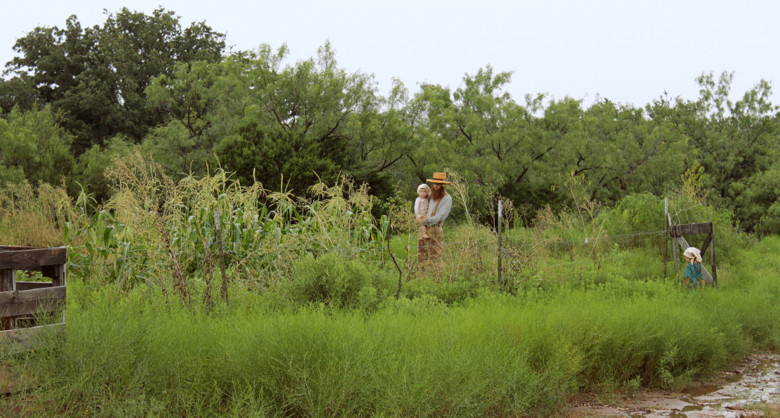
I’ve often heard – and seen for myself – that it almost never rains in July and August here. But the other day it rained for what seemed like the whole night… and then it rained for much of the morning and early afternoon the next day. The gardens were happy, the floors were muddy, and we were so grateful.
The chicken field is one of our three garden spaces – and the first stop as you walk from the house. It was so named because of its proximity to our very first chicken coop which has now become a compost bin.
The first two 30 foot rows are kidney beans. Where they are producing, they are doing well. A good portion of one row is stunted and its a good reminder to keep amending the soil. 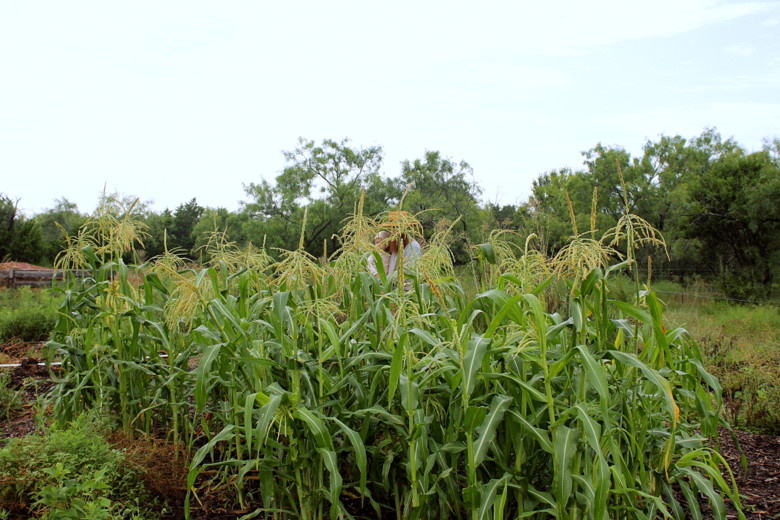
Next up are the popcorn and potato patches. The corn seems to be coming along nicely, though this is our first year with this variety. The potatoes have their own, less glamorous tale. I went out to the potato patch last week to dig one up and see how they were faring. A couple of them were rotting so, after asking Stewart about it, we decided to dig them all up one night while he was still recovering from a sinus infection.
Some of the potatoes were tiny, others were large and rotten, but in the end I would approximate that we got 10 pounds out of the harvest. While it was a modest harvest, we were thankful for it and I couldn’t wait to boil them up and serve them up with butter and salt. They were so pretty in the pot and that first bite was the quintessential homegrown potato flavor that you simply can’t get in the store.
But then it went terribly wrong. After another bite or two by both Stewart and I, we determined something was not right. Indeed, the bitter, metallic taste the potatoes left in our mouths long after our trial indicated a toxin present in potatoes which are diseased or have been subject to light. So, we threw the potatoes into the compost pile and scratched the sort of experimental method of growing them we tried this year off the list for next time.
The north side of the chicken field holds various things like Swiss chard, cantaloupe, and watermelon. Not pictured is lettuce, a tomato plant, a few okras we started just a couple of weeks ago, and a long row of wax beans which were tasty but haven’t produced very well.
There is also this huge summer squash plant that Annabelle was picking from.
Oh, and the popcorn is tasseling – if that’s what you call it. This is our first year growing a patch of corn in which it has actually survived and we’re enjoying watching it go through the phases of growth.
So that is the chicken field right now. The potato patch is slated to be amended and planted in more beans in the next week or so but other than that we wait for things to grow and ripen.
How does your garden grow?

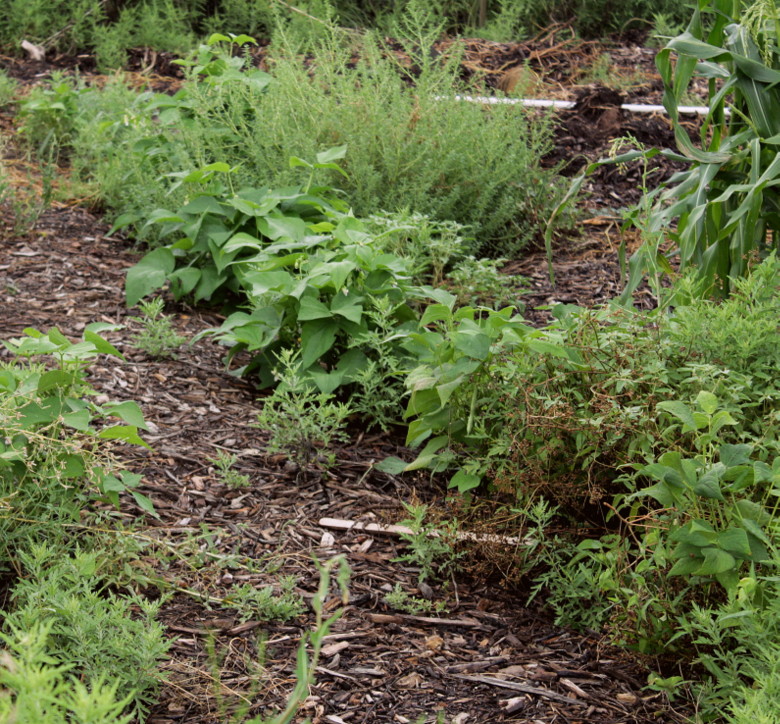
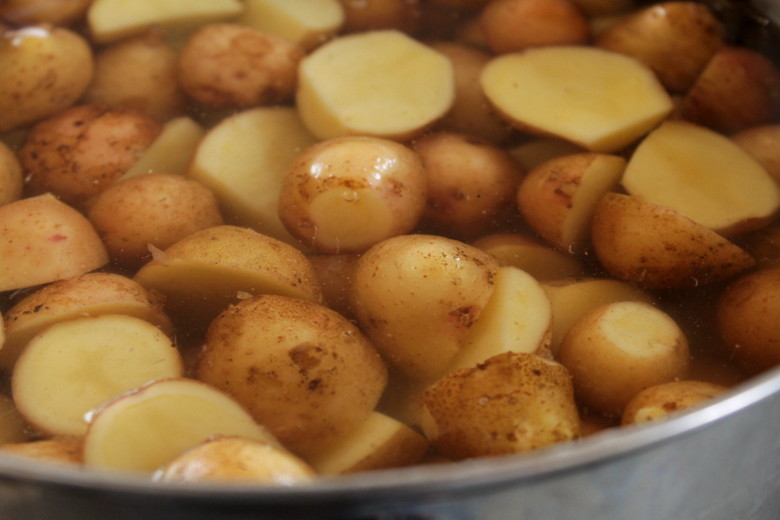

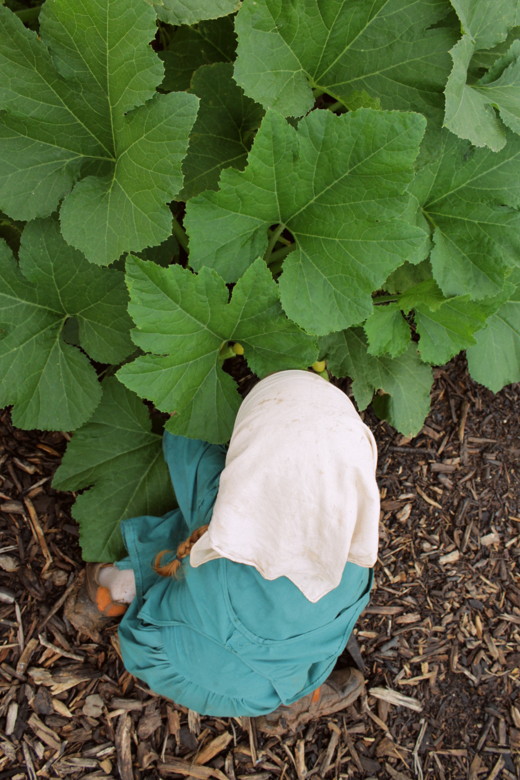
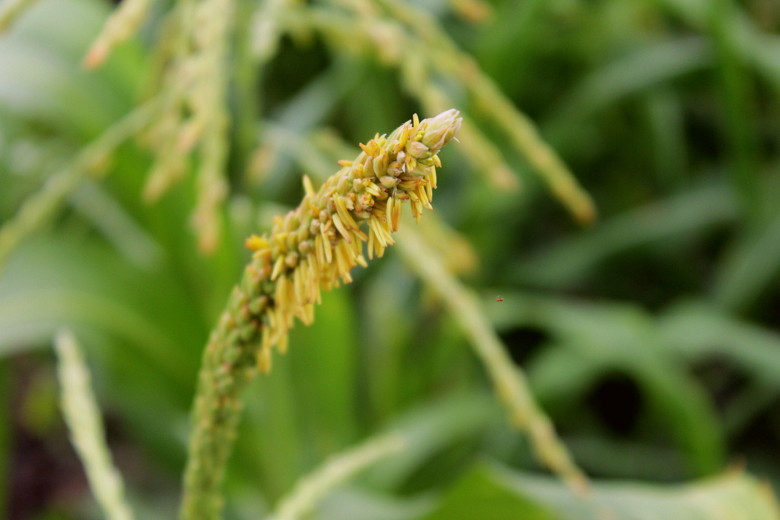
Shannon, what method did you use for your potatoes, may I ask? We live in Ontario and we tried the trench method this year to hopefully achieve a larger harvest. We have had a lot of rain and unfortunately I think many of our potatoes are rotting, too. Next year I think we’ll go back to the normal hilled up rows.
Laura – I believe Stewart laid down some not fully composted straw and manure, planted in that, and then covered in wood chip mulch. We also did not buy seed potatoes but instead cut up some unknown varieties of organic potatoes from the store. I think next time we will try something different on both accounts. Please let me know how your trench method goes! I’ll have to look that one up.
“So, we threw the potatoes into the compost pile and scratched the sort of experimental method of growing them we tried this year off the list for next time.” One sentence, but so much toil went into it. Sorry for the lost harvest.
Make sure to rotate your potatoes and tomatoes. Never plant potatoes and tomatoes close together or in the same spot in your garden. They use up the nutrients in the soil and do not replace it back in.
I have 3600 square feet of gardening area and I constantly rotate them and have huge success with the potato trench method. A 17′ X 22′ plot with 8 trenches 18″ apart, 4 rows are Yukon Gold & 4 are purple potato rows yield 300 pounds of potatoes.